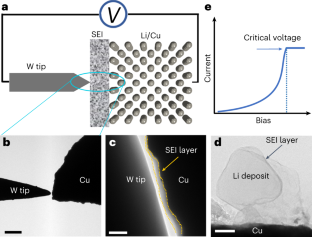2023-09-28 オークリッジ国立研究所(ORNL)
◆この方法では、長寿命の興奮した状態を持つ新しい酸が、紫外線光を使用して液体電解質の中でプロトン濃度を制御し、CO2を効率的に放出する条件を作り出します。この成果は、CO2放出と吸着剤の再生がエネルギー効率の高いプロセスにすることを目指しており、気候変動を緩和するために大規模な展開を可能にする新しいDACプロセスの開発に対する重要なステップです。
<関連情報>
- https://www.ornl.gov/news/light-activated-acid-drives-energy-efficient-demand-release-captured-co2
- https://onlinelibrary.wiley.com/doi/abs/10.1002/anie.202304957
エネルギー効率の高い直接空気捕獲のための準安定状態光酸を用いた光化学駆動CO2放出 Photochemically-Driven CO2 Release Using a Metastable-State Photoacid for Energy Efficient Direct Air Capture
Uvinduni I. Premadasa, Vera Bocharova, Audrey R. Miles, Diana Stamberga, Stella Belony, Vyacheslav S. Bryantsev, Adnan Elgattar, Yi Liao, Joshua T. Damron, Michelle K. Kidder, Benjamin Doughty, Radu Custelcean, Ying-Zhong Ma
Angewandte Chemie International Edition Published: 17 May 2023
DOI:https://doi.org/10.1002/anie.202304957
Graphical Abstract
On-demand CO2 release under ambient conditions using light instead of heat is achieved for simulated and amino acid-based direct air capture systems by regulating solution pHs via a photoinduced proton transfer of a reversible metastable-state photoacid, leading to energetically sustainable and economically feasible climate change mitigation solutions using solar energy.
Abstract
One of the grand challenges underlying current direct air capture (DAC) technologies relates to the intensive energy cost for sorbent regeneration and CO2 release, making the massive scale (GtCO2/year) deployment required to have a positive impact on climate change economically unfeasible. This challenge underscores the critical need to develop new DAC processes with substantially reduced regeneration energies. Here, we report a photochemically-driven approach for CO2 release by exploiting the unique properties of an indazole metastable-state photoacid (mPAH). Our measurements on simulated and amino acid-based DAC systems revealed the potential of mPAH to be used for CO2 release cycles by regulating pH changes and associated isomers driven by light. Upon irradiating with moderate intensity light, a ≈55 % and ≈68 % to ≈78 % conversion of total inorganic carbon to CO2 was found for the simulated and amino acid-based DAC systems, respectively. Our results confirm the feasibility of on-demand CO2 release under ambient conditions using light instead of heat, thereby providing an energy efficient pathway for the regeneration of DAC sorbents.




